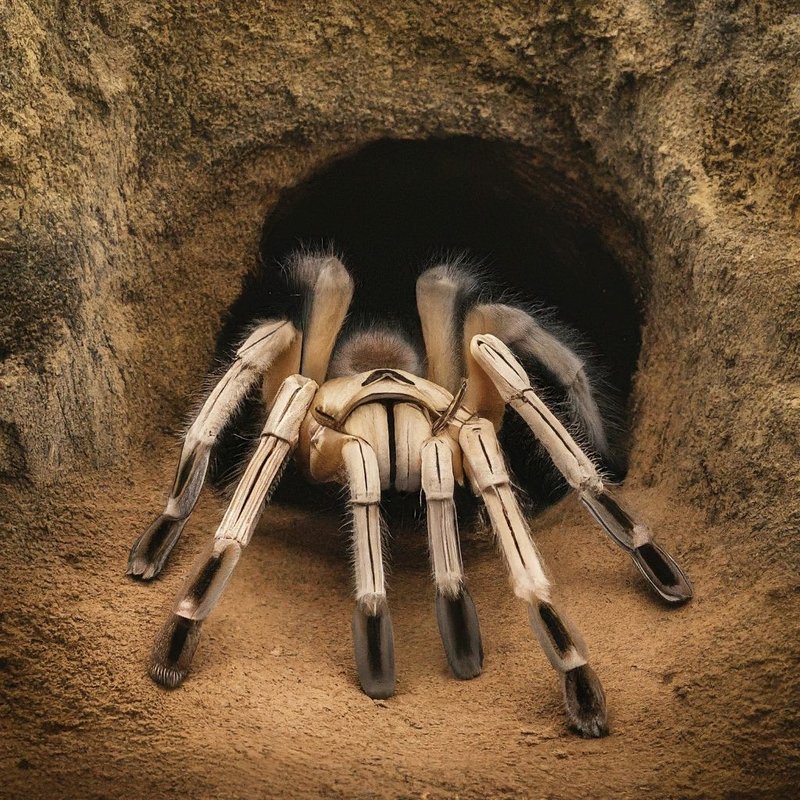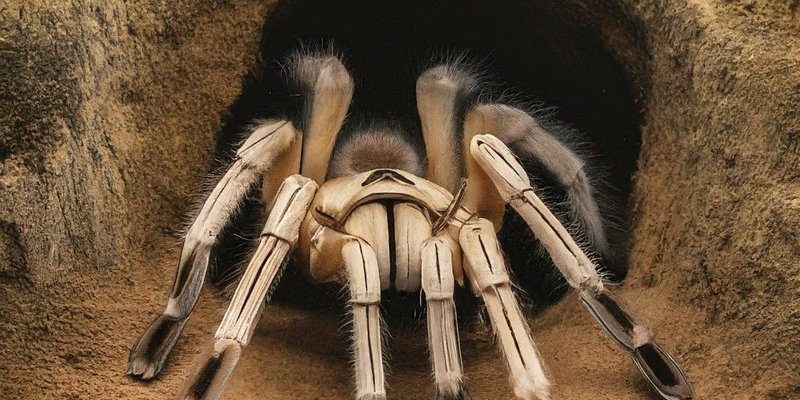
To understand this better, let’s dive into the world of tarantulas. Imagine a bustling city full of diverse personalities. You’ve got the outgoing ones who love to show off and the introverts who prefer a quiet night in. Tarantulas are a bit like that too! Some are feisty, while others just want to be left alone to do their own thing. The Skeleton Tarantula, known scientifically as Hapalopus sp., has garnered quite a reputation. But how much of that is deserved? Let’s find out!
What Makes Skeleton Tarantulas Unique?
Skeleton Tarantulas are not your average tarantula. They hail from the rainforests of South America, particularly in countries like Brazil and Paraguay. Their unique appearance—a blend of black and creamy white coloration—gives them a skeletal look that many find fascinating. But looks can be deceiving! Their stunning appearance is often overshadowed by misunderstandings about their behavior.
These arachnids are burrowing tarantulas, which means they spend a lot of time underground in their silk-lined homes. If you were to peek into their world, you’d see a cozy little den, and you might wonder if they even want to come out at all! Because they’re more of homebodies, they rarely feel the need to interact with humans, making them less likely to be aggressive.
Are Skeleton Tarantulas Dangerous?
When it comes to danger, the Skeleton Tarantula isn’t high on the list. In fact, they’re often seen as a good pet option for those venturing into the world of tarantulas. Their venom isn’t particularly potent compared to other species. Sure, it can cause some discomfort, like a bee sting, but it’s not life-threatening to healthy adults.
You might be wondering, “But what if it bites me?” That’s a valid concern! Most tarantulas, including the Skeleton, will do everything they can to avoid confrontation. They’re experts at using their retreat skills rather than being aggressive. If they feel threatened, they might give a warning by raising their front legs or making hissing sounds.
Understanding Tarantula Behavior
Tarantulas are often misunderstood. Many people wrongly assume that all tarantulas are aggressive and always itching for a fight. Here’s the thing: aggression in tarantulas usually stems from fear rather than a desire to attack. If you think about it, most creatures, including us humans, react defensively when we’re scared.
If you happen to own a Skeleton Tarantula, it’s essential to understand their body language. If it’s feeling cornered, it might strike out, but this behavior isn’t because it wants to hurt you. It’s just trying to protect itself! Building trust is crucial. When handled gently and consistently, these tarantulas can become quite relaxed.
Handling Skeleton Tarantulas Wisely
If you’re thinking of getting a Skeleton Tarantula as a pet, you’ll want to handle it correctly. First things first: don’t rush! Allow your tarantula time to get used to its new environment.
When you’re ready to handle it, ensure your hands are clean and dry. Always scoop from underneath rather than reaching in from above. This way, you’re giving it a sense of security, like inviting a friend to sit next to you, rather than towering over them.
Key Tips for Handling:
- Always use a container for transportation.
- Don’t grab them; let them crawl onto your hand.
- Be calm—movement can startle them.
You’ll find that as you build trust, your Skeleton Tarantula may become more comfortable being handled. Just remember, patience is key!
Comparing Skeleton Tarantulas with Other Species
It’s easy to go down a rabbit hole comparing tarantula species when you’re learning about them. Skeleton Tarantulas stand out not just for their looks, but also for their temperament.
Take the Mexican Redknee for example. This species is well-known for being a bit more docile compared to others. While Skeleton Tarantulas are usually peaceful, they can be more skittish than the Redknee, thanks to their burrowing nature.
So why does this matter? If you’re looking for a pet tarantula, consider your comfort level with handling and their temperament. If you prefer a more predictable, friendly tarantula, you might lean towards the Mexican Redknee. Skeleton Tarantulas, with their unique beauty, are a great choice but might require a bit more understanding of their shy personality.
So, is the Skeleton Tarantula dangerous or aggressive? The short answer is no. These remarkable creatures are more likely to hide than to attack, making them fascinating companions for passionate pet owners. They teach us about the beauty in being misunderstood and remind us that aggression often comes from fear.
If you’re considering adding a Skeleton Tarantula to your home, your approach matters. With patience and respect for their nature, you can form a unique bond with your eight-legged friend. Just remember to take it slow and enjoy the process of getting to know this incredible species. They might not be the party animals of the tarantula world, but their quiet charm might just capture your heart!

